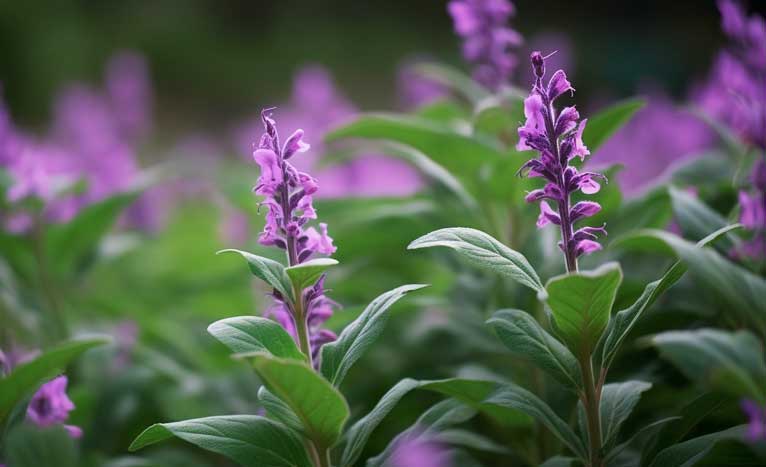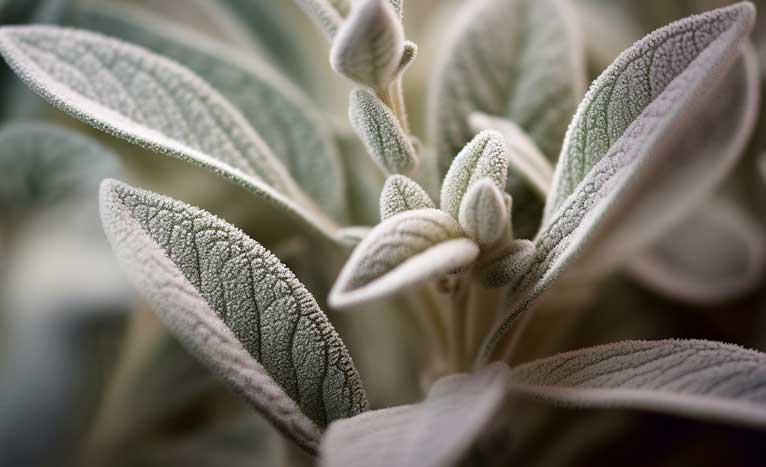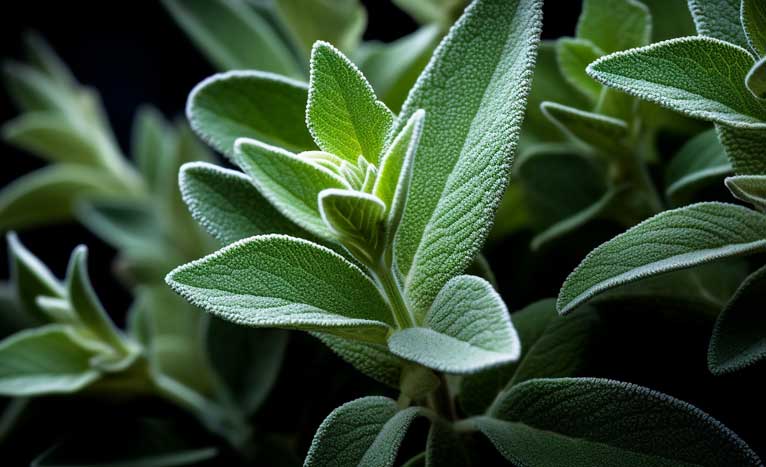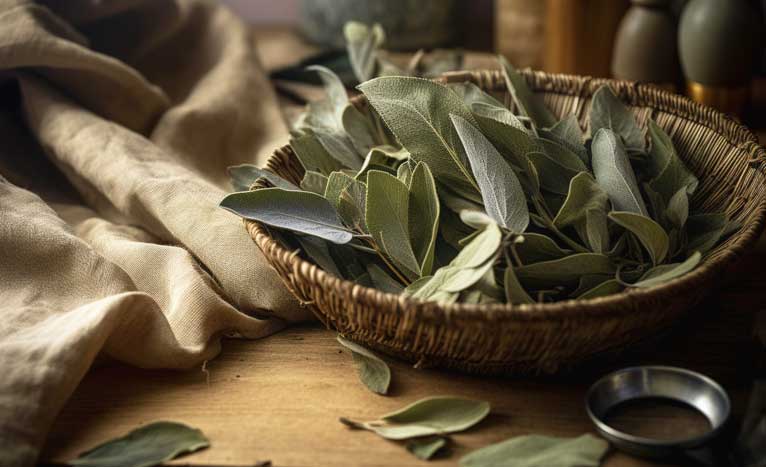My old house in the city had sage planted in the backyard, and I sure missed it so I planted some on the homestead! I missed having sage in my garden because it was fun to go out there and grab a few leaves for cooking and I discovered that honeybees love the flowers on sage! I am currently planting a garden for my honeybees and pollinators to love and cherish.
Sage is an aromatic herb that's been used for culinary and medicinal purposes for centuries. It's also a lovely addition to any garden with its fragrant foliage and attractive flowers. If you're interested in growing sage, this guide will provide you with all the information you need to get started. I love that it is a one-and-done kind of deal where you just have to plant it and it will come back each year!
Grow sage from seed in your backyard with these sage seeds!

Sage is a herb that's native to the Mediterranean region but is now widely cultivated throughout the world. It has aromatic leaves that are used in cooking and as a natural remedy for various ailments. Sage is also an ornamental plant that can add beauty and fragrance to any garden or landscape. I love wiping my hands on the leaves to smell the aroma of the sage! This will give me ideas to cook for dinner.
What is Sage?
Sage is a perennial herb that belongs to the mint family. It has soft, gray-green leaves with a slightly bitter, earthy flavor and a pungent aroma. Sage leaves are commonly used in cooking, particularly in Mediterranean and Middle Eastern cuisines. Because it is a perennial, it will come back each year. It is worth it to put in the work initially to have an abundance for years down the road.
Types of Sage
There are several types of sage, including:
Common Sage (Salvia officinalis): This is the most common type of sage and is widely used in cooking and herbal remedies.
Pineapple Sage (Salvia elegans): This type of sage has pineapple-scented leaves and is commonly used in teas and desserts.
Clary Sage (Salvia sclarea): This type of sage has large, hairy leaves and is commonly used in perfumes and aromatherapy.
All types of sage are easy to grow and have similar care requirements.
Best Time to Grow Sage
Sage is a hardy herb that can grow throughout the year in warm climates. In colder climates, it's best to plant sage in the spring after the last frost or in the fall before the first frost.
Location and Soil Requirements for Sage
Sage grows best in well-draining soil that's rich in organic matter. It can grow in a variety of soil types, but it prefers soil with a pH of 6.0 to 7.0. Sage needs full sun to partial shade to thrive, so choose a location that gets at least six hours of sunlight daily.

Sage Propagation Methods
Sage can be propagated from seeds or cuttings. The easiest and most common way to propagate sage is by taking cuttings.
Propagating Sage from Cuttings
To propagate sage from cuttings, follow these steps:
- Take a 4- to 6-inch cutting from a healthy sage plant.
- Remove the leaves from the bottom 2 inches of the stem.
- Dip the cut end of the stem into rooting hormone powder.
- Plant the stem into a pot filled with well-draining soil.
- Water the soil gently to moisten it.
- Cover the pot with a plastic wrap or lid to create a greenhouse-like environment.
- Place the pot in a warm and bright location but away from direct sunlight.
- Once the cutting has rooted, remove the plastic wrap or lid and place the pot in direct sunlight.
Planting Sage
When planting sage, follow these steps:
- Choose a location that gets at least six hours of direct sunlight daily.
- Prepare the soil by removing any weeds or debris and adding organic matter like compost or well-rotted manure.
- Dig a hole that's slightly larger than the root ball of the plant.
- Place the plant into the hole and cover the roots with soil.
- Water the soil gently to settle it around the roots.
- Mulch the soil around the plant to retain moisture and suppress weeds.
Caring for Sage
Sage is a low-maintenance plant that requires minimal care. Here are some tips for caring for sage:
- Water the plant regularly but avoid overwatering as it can cause root rot.
- Fertilize the plant once a year in the spring with a balanced fertilizer.
- Prune the plant regularly to encourage bushy growth and prevent legginess.
- Divide the plant every two to three years to prevent overcrowding.
- Pests and Diseases Affecting Sage
Sage is generally a pest-resistant plant, but it can be affected by some common pests and diseases, such as:
- Spider mites
- Whiteflies
- Powdery mildew
- Root rot
To prevent these problems, keep the plant well-watered and avoid overcrowding. If the plant is affected by pests or diseases, treat it with an appropriate pesticide or fungicide.

Harvesting Sage
Sage can be harvested throughout the growing season, but it's best to harvest it in the morning when the essential oils are most concentrated. To harvest sage, follow these steps:
- Choose a dry and sunny day to harvest the leaves.
- Use a pair of sharp scissors to cut the stem about 1 inch above the base of the plant.
- Rinse the leaves with water to remove any dirt or debris.
- Allow the leaves to dry in a cool and dark place for a few days.
- Store the dried leaves in an airtight container in a cool and dark place.
Uses of Sage
Sage has numerous uses, including:
Culinary purposes: Sage leaves are commonly used in cooking, particularly in Mediterranean and Middle Eastern cuisines.
Medicinal purposes: Sage has anti-inflammatory, antiseptic, and antioxidant properties, making it useful in treating various ailments like sore throat, digestive issues, and memory problems.
Cosmetic purposes: Sage is used in various skincare products like creams, lotions, and shampoos due to its cleansing and soothing properties.
Ornamental purposes: Sage is a popular ornamental plant that adds color and fragrance to gardens, landscapes, and indoor spaces.
Sage is a versatile and useful herb that's easy to grow and care for. With proper attention, you can enjoy its fragrant foliage and flavorful leaves throughout the year. Whether you're a beginner or a seasoned gardener, sage is a plant worth growing.
FAQs
Can sage grow in containers?
Yes, sage can grow in containers, making it an excellent choice for small gardens or indoor spaces. Think about putting containers on your porch or patio. Utilize the space you have to maximize your garden.
How often should I water sage?
Water sage regularly but avoid overwatering as it can cause root rot.
How do I prune sage?
Prune sage regularly to encourage bushy growth and prevent legginess. Use sharp scissors to cut back the stems by about one-third of their length.
What are the uses of sage?
Sage has numerous uses, including culinary, medicinal, cosmetic, and ornamental purposes.
How do I dry sage leaves?
To dry sage leaves, choose a dry and sunny day to harvest the leaves. Rinse them with water and allow them to dry in a cool and dark place for a few days. Store the dried leaves in an airtight container in a cool and dark place.
I love that safe is a no-fuss garden plant. The old plant at my previous home was already there when I moved in and all I had to do was water and harvest it each year! I love perennial plants because they come back each year and require low maintenance. Not only will you love having sage in your garden but your local pollinators will be happy too.

